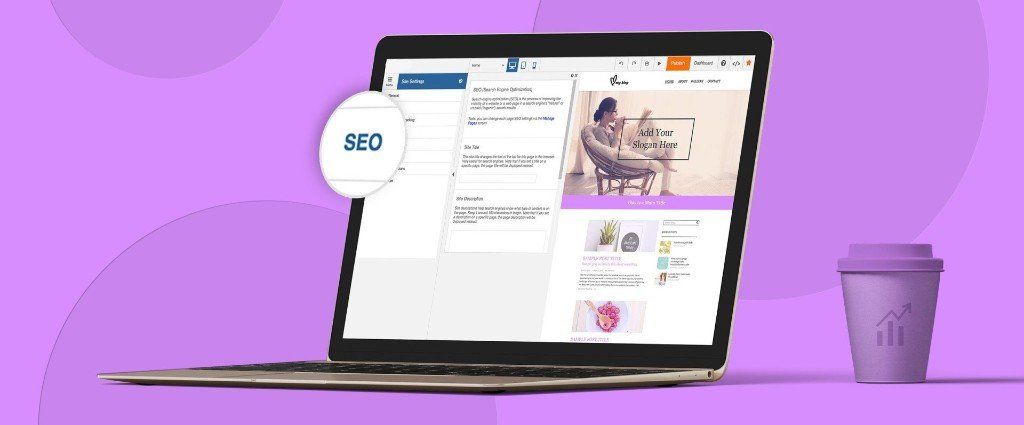Create an outstanding website for every visitor
Your standard, successful website is made from a blend of beautiful design, clearly written content and a well-thought-out conversion funnel.
And all of that’s great, but who wants to just be ‘standard,’ when you can be so much more?
To maximize your website’s potential as a customer-conversion machine, you need to create a visitor experience that is highly engaging and speaks directly to your potential customers’ needs.
We deliver professional, high-quality websites for our clients that evoke emotion and improve interaction. Simply put, our design work delivers real, measurable results.
Our state-of-the-art features are proven to increase search engine ranking, boost sales, and deliver a better overall experience across every device type.
One Website That Works On Desktop, Tablet and Mobile
Traditional desktop-only sites simply won’t cut it anymore. One study from comScore found that 49 percent of digital media time is spent on mobile devices, with tablets accounting for an additional 12 percent. With just 31 percent of time left over for desktop devices, it becomes clear that websites should be built mobile-friendly, tablet-friendly, and desktop-friendly. That’s why we employ what’s called responsive web design.
Traditionally, responsive design means stretching and shrinking your site to fit different screen sizes. However, we take it a step further by tailoring different features for different devices as well. For example, a Click-to-Call button will appear on a mobile device, but not a tablet or desktop.
The experience and the needs of a visitor can greatly differ between a mobile and desktop device, and we make sure that our content and designs consistently reflect that.
Website Personalization
Normally, the web is a uniform experience—every visitor gets the same experience on a website as the next guy. But over the past few years, large enterprises like Amazon have used a strategy of website personalization to boost their conversion rate. This is because creating a one-to-one visitor experience speaks directly to a potential customer and their needs.
However, we don’t think this technology should be reserved for companies with vast budgets and endless resources. So, we’ve developed a way to offer this kind advanced customer-conversion technology to small business owners like you.
Stats on Website Personalization
There’s a few statistics that show how much web personalization can help the success of your website.
- Nearly three in four (74 percent) online consumers get frustrated with websites when the content that’s displayed, such as offers or promotions, has nothing to do with their interests.
- In-house marketers who personalize their customers’ web experiences see an average of 19 percent uplift in sales.
Our agency can create a dynamic website that changes based off user’s behaviour such as visit history, proximity to your business, time of day/week/month, device type, etc., that adapts its content to deliver a tailored experience with business-driving features that increase conversions.
Website personalization truly is the next great frontier in web design.
Better Search Engine Optimization (SEO)
No matter how big or small your website is, SEO is one of the most powerful tools available. Search engine optimization relates to how well your site does in search rankings on sites like Google and Bing. The higher your site climbs in rankings, the more likely it will gain new traffic, visits and customers.
Knowing this, we employ the best of the best SEO practices on all of our sites to get our clients the most traffic possible. We accomplish by highly targeting certain keywords and optimizing the structure of your site to be the most Google- and Bing-friendly it can be.
Once again, this is where responsive design comes into play. The websites create are structured under one URL (e.g. www.examplesite.com ), which makes it easier for these search giants to find relevant information on your site that helps give you a boost in rankings. This is especially important for highly-valued mobile search traffic.
Currently, mobile devices are winning the battle for supremacy in local search, and these searchers are looking to take action. According to a study from Google, four out of five consumers conduct local searches on search engines and 88 percent of them are doing it on smartphones. What’s more, 50 percent of these people will visit a store within a day.
But we don't’ stop there. We’ll work hand-in-hand with your business to gain a full understanding of what we can do to develop a comprehensive SEO strategy that generates more traffic on every device.
Business-Driving Features
Building a beautiful website is only half the battle—you also need a website that can perform. Here’s a list of our features that we can build into your site to increase conversion.
Site Widgets
Click-to-Call
Enables customers to call a business in one click from a mobile device.
Maps
Integrated with Google Maps, provides step-by-step directions to a brick-and-mortar location.
Multi-Location
For businesses across a region, provide a map for site visitors detailing each store location.
Online Scheduling
Available through vCita, enables customers to schedule appointments on desktop, tablet and mobile.
Coupons
Put coupons into the hands of customers by dragging and dropping them onto a site. Control the amount of the discount, duration of coupon, etc.
Restaurant Menu
The content from a menu of an existing restaurant website will be automatically imported when using this widget and laid out in a beautiful new format.
Business Hours
A crucial part of any website, this widget can be filled out manually or automatically imported from a website.
Contact Form
Drag and drop a Contact Form into a site to give customers an alternative way of reaching out.
Custom HTML
Add your own HTML/CSS/JavaScript to the page directly. Great for third-party integrations or adding custom code.
Click-to-Email
Provide visitors with the ability to directly email the small business that owns the website.
List
Create a list of anything from products to staff members using this widget.
Yelp Reviews
Displays your best reviews directly on a site to build a business’ credibility with potential customers.
Image Slider
Give visitors a swipeable image slider to view multiple images without taking up too much space on the site.
Photo Gallery
Include a photo gallery on any page. Provides a shadow box effect to focus the viewer on the image.
File Upload
Upload PDFs, spreadsheets and more.
Social Icons
Links to your social media pages are neatly arranged and can be dropped anywhere on a website.
YouTube Video
Embed any YouTube video by dragging this widget into place.
Twitter Feed
Keep visitors up to date by displaying a live Twitter feed.
Facebook Comments
Allows visitors to comment on a linked Facebook page without leaving the site.
Facebook Album
Add a photo gallery of images from your Facebook business page.
Facebook Like
Enables visitors to like a business’ Facebook page without leaving the site.
Share
Visitors can share the site on their social media networks simply by clicking on this icon.
WordPress Feed
Incorporate blog posts from WordPress directly on your site.
Superior Speed
High-speed website performance isn’t a luxury for a great website—it’s a requirement. Not only do people expect a page to load quickly, but Google has indicated that pagespeed is a direct factor for SEO. Neither your customers nor Google has a second to spare waiting for a page to load, so pagespeed is one of our top priorities.
When we’re crafting our sites, we go through extreme lengths to ensure that we live up to the promise of a fast site, and we routinely test the speed of your site to double check that we maintain that standard. Here are a few ways we achieve the speeds demanded by both Google, Bing and your visitors:
- Optimized Images – Our images go through a process that generates a number of images in different sizes (to be delivered as needed to the device your visitor is using) and compresses them without losing quality.
- Server Response Time – Sites hosted through our agency will display for your clients very quickly. We write our code and design our infrastructure specifically to this end.
- Global CDN – To double-up on speed, we use a global CDN, so no matter where someone is trying to view your site from, the site load-time for them is just a few seconds.
- Constant Testing – We routinely test our client’s site speed scores every to make sure your site speeds meet our standards.
Better Overall Experience
So now you know the nuts and bolts of our website building process, and you have a better understanding of the features that we offer. But what all of this really comes down to is, at the end of the day, we want to help our clients be successful.
Why Work With Us
We’ve found the only way to accomplish all these goals to build a special relationship with our clients through a constant process of communication and feedback. If we’re going to carry out our promise of delivering a personal and incredible website experience to your potential customers, we also need to deliver a personal experience to you.
Find out more about the incredible companies we work with here and contact us to see how we can help with your website.
More Posts.













